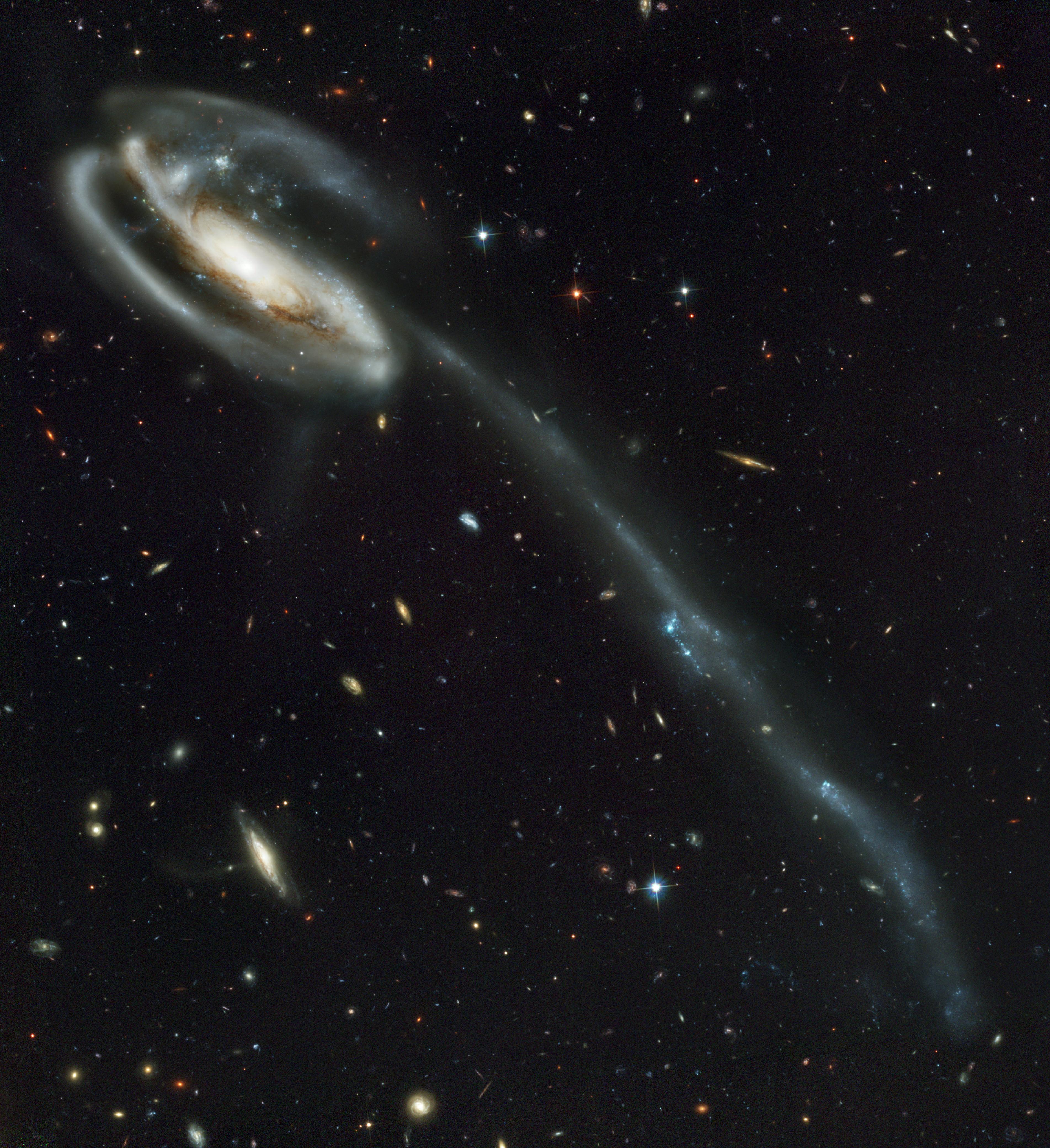
The Tadpole Galaxy
This odd-looking galaxy with the long streamer of stars appears to be racing through space like a runaway pinwheel firework, or a tadpole with a thick head and translucent tail, in this Hubble Space Telescope image. Galaxy UGC 10214, or the "Tadpole," is a spiral galaxy unlike the textbook images of these stately systems. Its distorted shape was caused by a small interloper: a very blue, compact galaxy visible in the upper left corner of the more massive Tadpole, seen shining through the Tadpole's disk. Strong gravitational forces from the interaction between the two galaxies created the long tail of debris, consisting of stars and gas that stretch out more than 280,000 light-years. Numerous young, blue stars and star clusters, spawned by the galactic encounter, are seen in the spiral arms, as well as in the long tidal tail of stars. Two prominent clumps of young, bright, blue stars in the long tail are separated by a "gap," a section that is fainter than the rest of the tail. Astronomers believe these stellar clumps will likely become distinct dwarf galaxies that will orbit in the Tadpole's halo.
- X



























